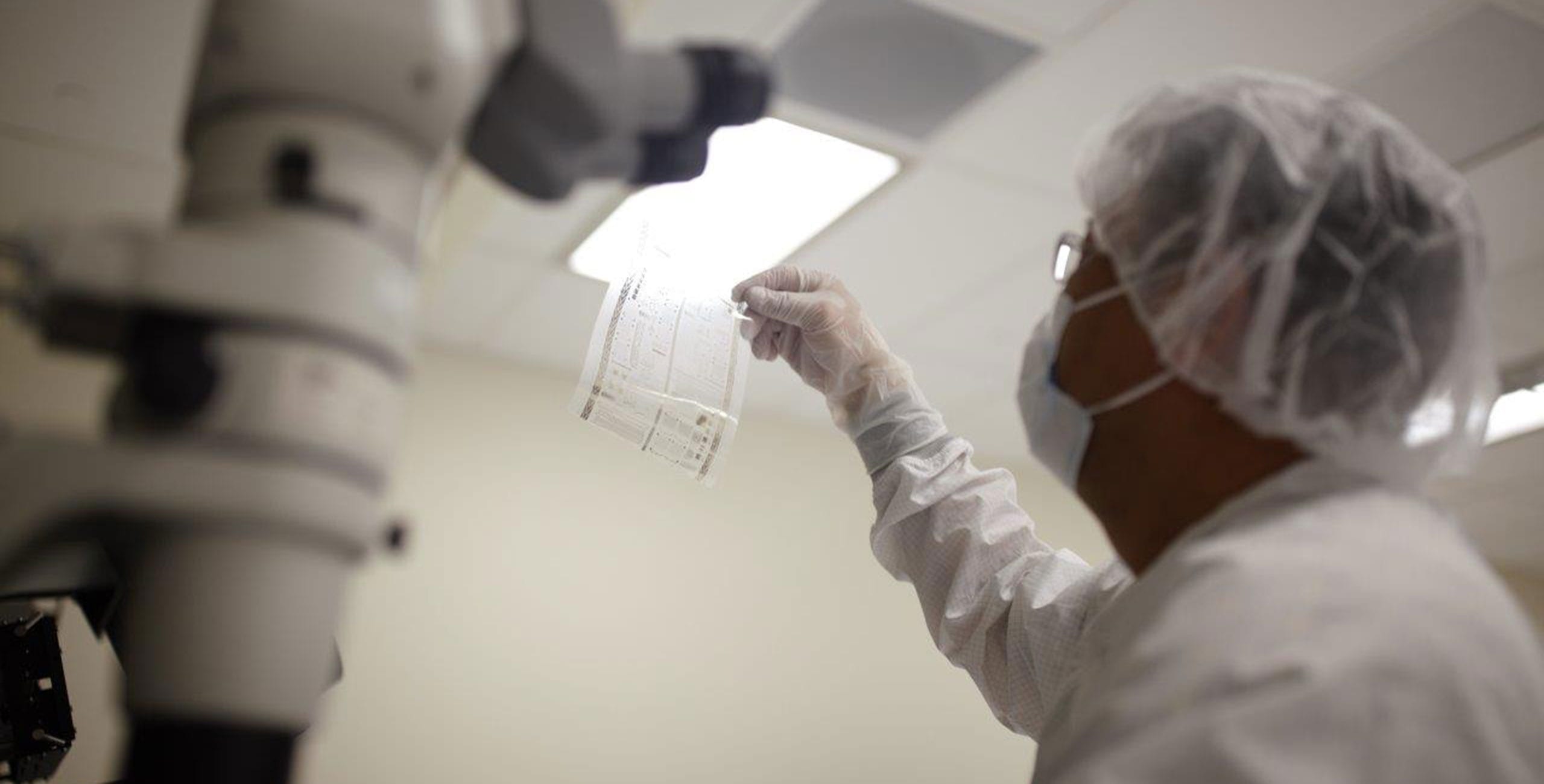Since its launch in 2015, NextFlex has been behind much of the R&D in the flexible hybrid electronics (FHE) industry in the U.S. This Silicon Valley-based consortium of companies, academic institutions, nonprofits, and government agencies – like the Department of Defense (DOD) – is staying ahead of the curve on new technologies and continues its ongoing efforts to develop FHE innovations that will accelerate its adoption in the U.S. while serving the nation’s warfighters. In addition, thanks to its expansion strategy, the organization has announced a $4.4 million investment towards electronics manufacturing projects thanks to its latest Project Call funding round, PC 8.0.
Fulfilling one of the institute’s primary goals, fostering technology innovation and commercialization, Project Call 8.0 seeks to fund undertakings that further the development and adoption of FHE while addressing critical challenges in advanced manufacturing that support DOD priorities. According to the manufacturing institute, the total PC 8.0 project value is expected to exceed $9.4 million, bringing the total anticipated investment in advancing FHE since NextFlex’s formation to $134 million. Additional committed project funding from the DOD, other federal funding agencies, industry projects, and state and local government initiatives adds another $165.1 million.

One of the teams chosen for the PC 7.0 award developed stretchable and wearable data cables for many on-body network applications. Image courtesy of UES via LinkedIn.
Building from the success and maturity of past project calls, PC 8.0 continues using broadly defined topics to enable a diverse base of proposals, with particular emphasis on areas in which FHE can impact high-priority U.S. manufacturing opportunities. For the eighth year, the research institute will award funding to projects from member and non-member companies seeking to develop the U.S. advanced electronics industry through defense applications and increased adoption of hybrid electronics.
This year, PC 8.0 funding will go to projects targeting these topic areas:
- Additively manufactured 3D devices with increased complexity
- High-performance FHE interconnects
- Applications in harsh environments, including space
- Advancing the manufacturability of FHE processes toward standardization
- Reducing environmental and climate impacts of FHE manufacturing
- New project leads
“This new funding opportunity carries the momentum from previous project calls to elevate the level of sophistication of FHE-enabled devices, extend hybrid electronic manufacturing process capability, and enhance environmental sustainability,” said Scott Miller, NextFlex Director of Technology. “As FHE technology’s potential has been more fully demonstrated, we are now able to focus on meeting the reliability, standardization, and advancing technology transition into the U.S. industrial manufacturing base.”
With most funding from the government, research institutes, and investment firms, FHE remains an emerging sector. It combines the flexibility of low-cost printed plastic film substrates with semiconductor chips to create a new type of electronics. NextFlex is accelerating this method of creating flexible, stretchable, and conformable devices with electronic capabilities using additive manufacturing. Once commercialized, FHE devices and components will help in several critical application areas, including the Internet of Things (IoT) and wearable industries.
Launched through a $171 million cooperative agreement between the DOD and the NextFlex institute, NextFlex claims its taking critical steps toward furthering U.S. development and adoption of FHE that will revolutionize society. One of the recent big wins for local R&D and manufacturing was the 2022 CHIPS act which includes roughly $52 billion to boost domestic semiconductor research and development and is being called a “once-in-a-generation investment in America itself” by the Biden administration.
According to NextFlex’s Executive Director Malcolm Thompson, the signing of the CHIPS Act “signals some positive signs for the future.” With significant companies investing tens of billions of dollars into manufacturing and a federal allotment for R&D, the country can start regaining ground in the chips industry, the expert stated in a recent edition of I-Connect007.
Reclaiming semiconductor manufacturing is crucial, especially since the U.S. share of global manufacturing fell to 12% in 2020 from 37% in 1990, according to the Semiconductor Industry Association. In comparison, the New York Times suggests that China’s share of manufacturing rose to 15% from almost nothing in the same period.
Devoted to promoting FHE technology advances, NextFlex has also released its latest FHE Technology Roadmaps for the year. Detailing opportunities and needs in eleven electronics technical areas, including automotive, human monitoring systems, and soft wearable robotics, the document offers key insights, gap areas, and project calls to advance the manufacturability of FHE. The public roadmaps can be accessed here.
Additional information about NextFlex’s PC 8.0 topics, proposal submission procedures, and more will be introduced during the Proposer’s Day and Teaming Event on Tuesday, March 28, at the NextFlex Winter FHE Symposium. Anyone interested can register for the symposium to participate or submit slides for the Teaming Event. Proposals are due May 11, 2023.
Subscribe to Our Email Newsletter
Stay up-to-date on all the latest news from the 3D printing industry and receive information and offers from third party vendors.
Print Services
Upload your 3D Models and get them printed quickly and efficiently.
You May Also Like
Reinventing Reindustrialization: Why NAVWAR Project Manager Spencer Koroly Invented a Made-in-America 3D Printer
It has become virtually impossible to regularly follow additive manufacturing (AM) industry news and not stumble across the term “defense industrial base” (DIB), a concept encompassing all the many diverse...
Inside The Barnes Global Advisors’ Vision for a Stronger AM Ecosystem
As additive manufacturing (AM) continues to revolutionize the industrial landscape, Pittsburgh-based consultancy The Barnes Global Advisors (TBGA) is helping shape what that future looks like. As the largest independent AM...
Ruggedized: How USMC Innovation Officer Matt Pine Navigates 3D Printing in the Military
Disclaimer: Matt Pine’s views are not the views of the Department of Defense nor the U.S. Marine Corps Throughout this decade thus far, the military’s adoption of additive manufacturing (AM)...
U.S. Congress Calls Out 3D Printing in Proposal for Commercial Reserve Manufacturing Network
Last week, the U.S. House of Representatives’ Appropriations Committee moved the FY 2026 defense bill forward to the House floor. Included in the legislation is a $131 million proposal for...



































